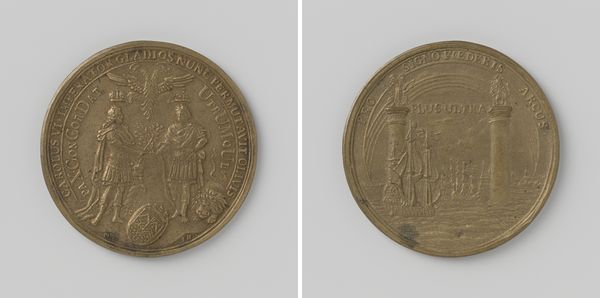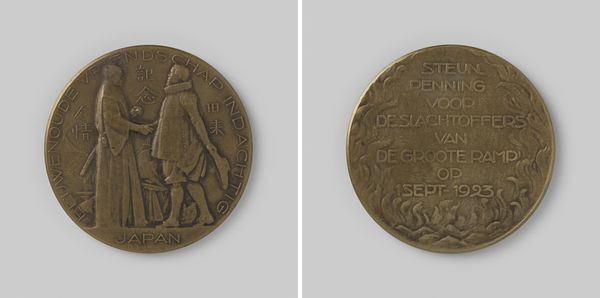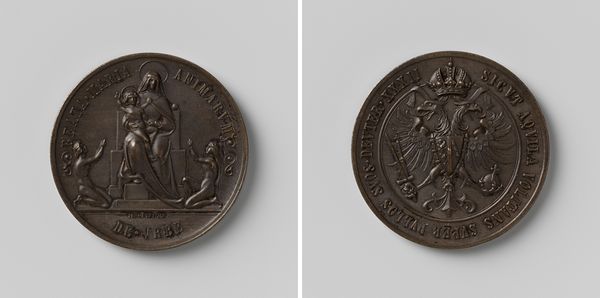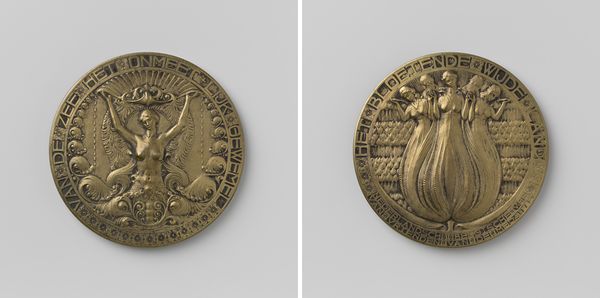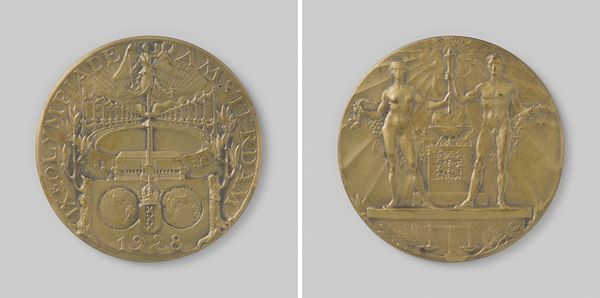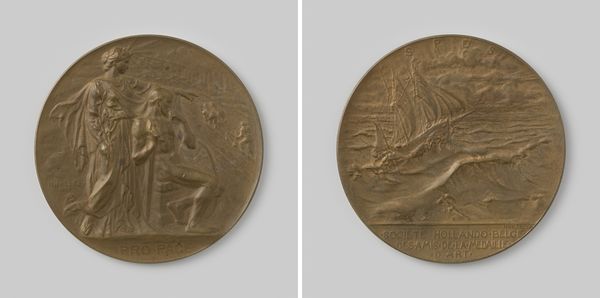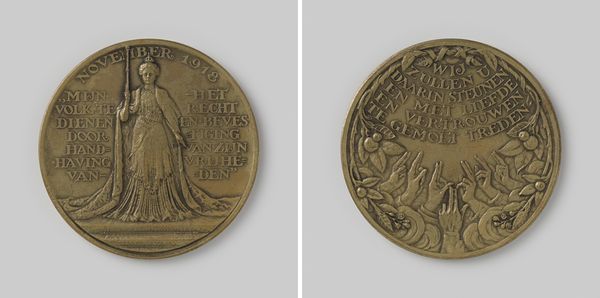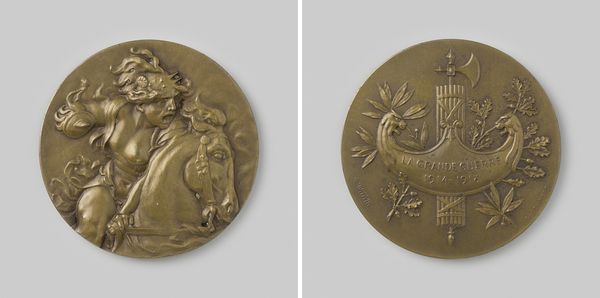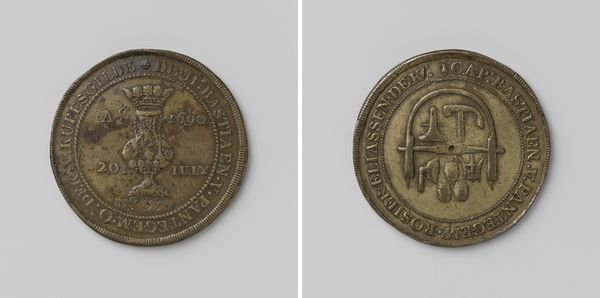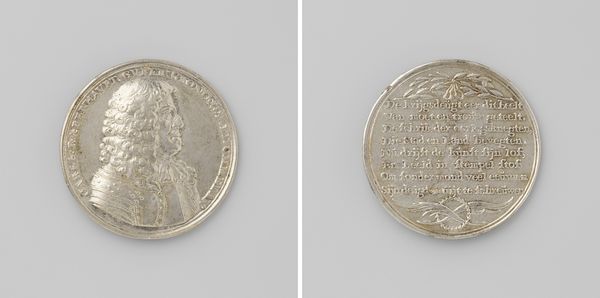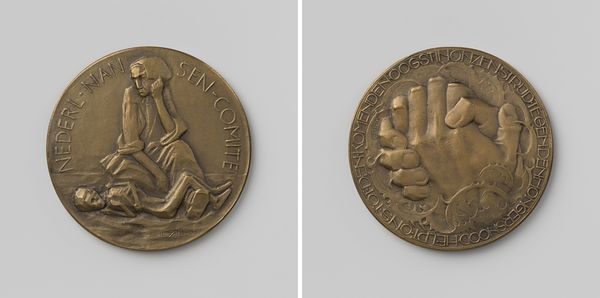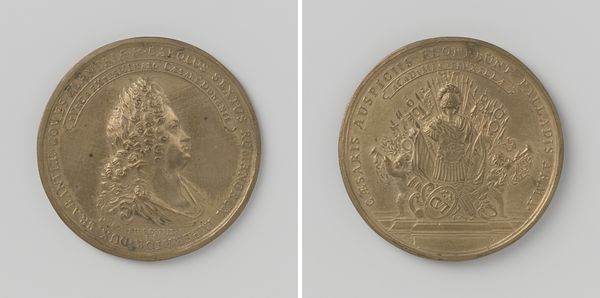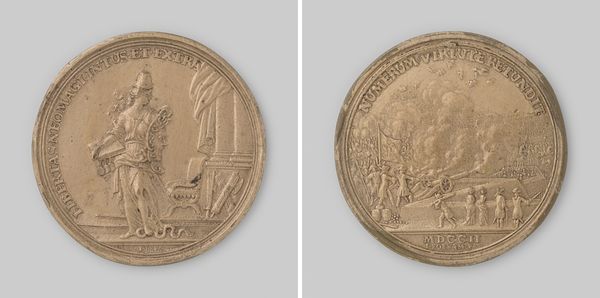
Dimensions: diameter 6 cm, weight 93.56 gr
Copyright: Rijks Museum: Open Domain
Editor: This is a bronze relief sculpture entitled "400ste Geboortedag Willem van Oranje" by Oswald Wenckebach, created in 1933. The round shape and the use of bronze give it the feel of a commemorative coin, and it is striking to me how much the kneeling figure on one side contrasts with the bird nesting peacefully over the water on the other side. How do you interpret this work? Curator: The stark contrast is precisely where the artwork's power lies. Given its creation in 1933, during a period of rising nationalism and anxieties surrounding identity, this piece presents a potent narrative. On one side, we see William of Orange in a posture of supplication. What does it mean to portray a historical figure, typically lionized for their strength, in such a vulnerable state? Does it humanize him or does it perhaps hint at the burdens of leadership, especially in a time of uncertainty? Editor: That's a great point. I had thought about the kneeling figure only in the religious or devotional sense. What about the other side, with the nesting bird? Curator: Ah, the imagery of the bird—perhaps a seagull, given the presence of water—offers a compelling counterpoint. Consider the inscription "saevis tranquillus in undis" – "Tranquil in turbulent waters." This, paired with the symbolism of the nest, speaks to a desire for peace, stability, and hope amidst societal storms. Do you see the inherent tension between these two sides as reflective of the sociopolitical climate of the time? The Netherlands, like much of Europe, was on the precipice of great upheaval. Editor: I do. It makes me think about how even in times of national celebration, there can be underlying currents of unease and longing for stability. It's not just a simple heroic image. Curator: Exactly! By juxtaposing vulnerability and the aspiration for peace, Wenckebach’s relief becomes a powerful meditation on leadership, national identity, and the yearning for tranquility in an increasingly unstable world. We should reflect on what national pride means while remembering the less powerful among us. Editor: I learned to consider both national narratives and critical intersectional analysis, which greatly expanded my understanding!
Comments
No comments
Be the first to comment and join the conversation on the ultimate creative platform.
